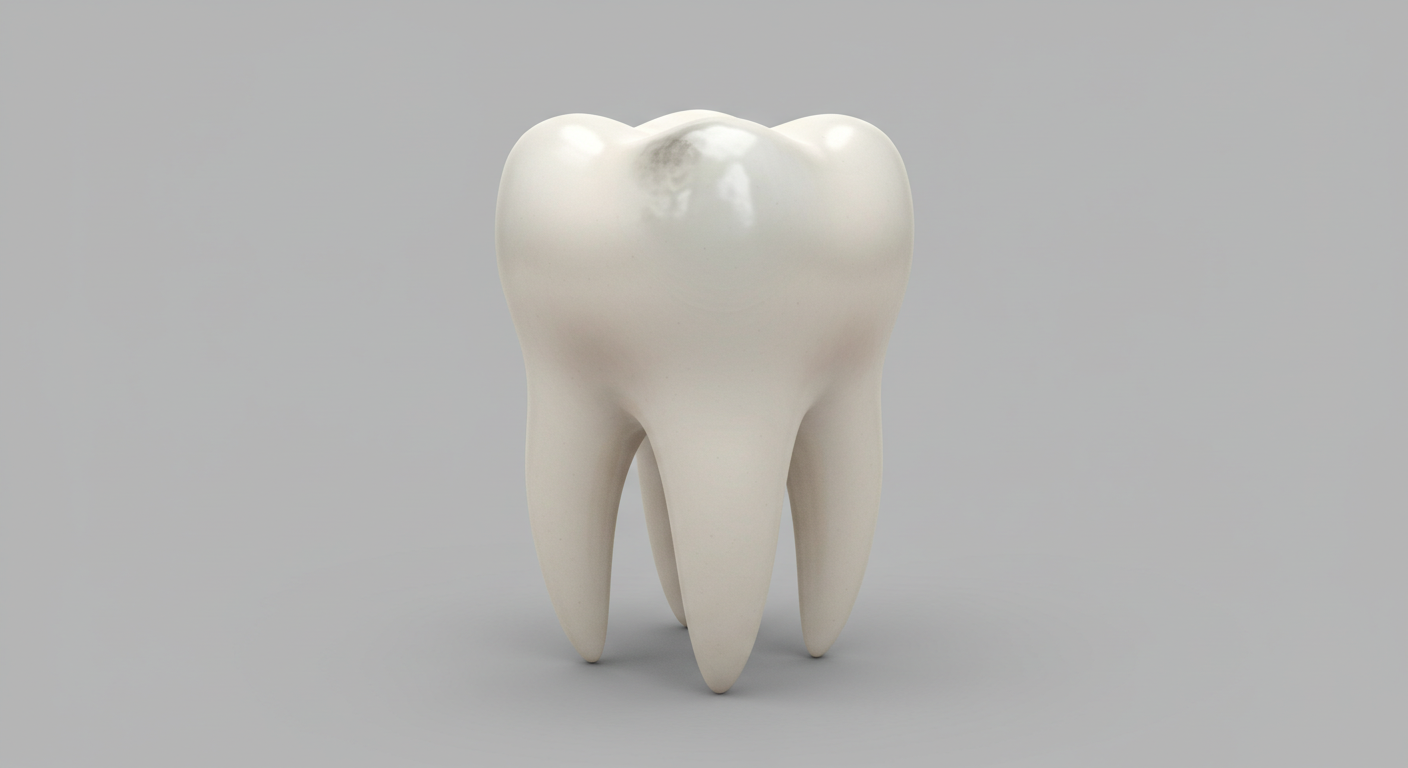Contents

Cavity vs Stain: How to Tell the Difference (Complete Guide)
When you notice a spot on your tooth, it's tempting to immediately think it's a cavity. However, distinguishing a harmless stain from a cavity can be complex, as their appearances can be similar. A cavity is a dental lesion that damages the enamel and dentin, often causing pain and requiring urgent treatment to avoid infections. A stain, on the other hand, is a simple coloration or discoloration of the enamel, often superficial. It usually doesn't cause pain but can evolve if linked to poor hygiene or a developing cavity.
In this article, we help you identify these differences, understand their causes, and adopt the right practices for optimal oral health.
What is the Difference Between a Cavity and a Stain?
What is a Dental Cavity?
A cavity is the most common oral infection, caused by bacteria in dental plaque. These bacteria feed on sugars and produce acids that attack the enamel, then the dentin, forming a cavity. Without treatment, a cavity can reach the dental pulp, leading to intense pain, an abscess, or tooth loss.
Typical Symptoms:
- Pain or sensitivity to hot, cold, sweet, or acidic foods.
- Appearance of a visible hole or a dark/black area on the tooth.
- Persistent discomfort or pain when chewing.
Common Causes:
- Plaque Buildup: Poor oral hygiene promotes bacterial growth.
- Unbalanced Diet: Excessive consumption of sugars or acidic foods accelerates enamel breakdown.
- Genetics: Some people have naturally more vulnerable enamel.
- Tobacco: Smoking can contribute to weakening the enamel.
A cavity does not heal on its own and requires dental intervention, such as a filling or, in advanced cases, a root canal.
What is a Stain on the Teeth?
Unlike a cavity, a stain is a simple coloration or discoloration of the enamel, often superficial. It usually does not cause pain but can progress if related to poor hygiene or a developing cavity. Stains vary in color (white, brown, yellow) and can change shape or disappear with proper cleaning.
Possible Causes:
- Pigmented Foods: Coffee, tea, red wine, or turmeric can stain the enamel, especially if it's porous.
- Tobacco: Nicotine and tar leave marks on the teeth.
- Medications: Certain treatments, like tetracyclines, can cause permanent stains.
- Poor Hygiene: Plaque that is not removed can lead to brown or yellow stains.
- Genetics: The natural color of teeth varies from person to person.
Stains are not always problematic, but they should be monitored to ensure they are not masking a developing cavity.
How to Identify a Cavity or a Stain
Telling the difference can be difficult without a dentist's expertise. Here are some clues:
- Visual Appearance: A stain is often flat, without a cavity, and may fade with brushing. A cavity, on the other hand, forms an indentation or a darkened area, sometimes rough to the touch.
- Pain or Sensitivity: If you feel pain, even slight, when chewing or with certain foods, it's likely a cavity.
- Evolution: A stable stain or one that diminishes with cleaning is usually harmless. A spot that darkens, enlarges, or becomes painful may indicate a developing cavity.
If you're in doubt, an X-ray or a clinical exam with a dentist is essential for an accurate diagnosis.
How to Treat and Prevent Cavities and Stains
Treating a Cavity
A cavity requires professional intervention:
- Filling: For minor cavities, the dentist removes the damaged part and fills the cavity with a composite or amalgam.
- Root Canal: If the cavity reaches the pulp, a root canal may be necessary to remove the infected nerve.
- Extraction: In severe cases, extraction may be considered, followed by an implant or prosthesis.
Removing or Preventing Stains
For stains, adopt these strategies:
- Special Toothpaste: Use a whitening or anti-stain toothpaste to reduce discoloration.
- Professional Cleaning: An annual scaling at the dentist removes stubborn stains and prevents their recurrence.
- Dietary Changes: Reduce sugary, acidic, and colored foods. Avoid tobacco.
Essential Oral Hygiene
In both cases, good hygiene is crucial:
- Brush your teeth 2 to 3 times a day with a fluoride toothpaste.
- Use dental floss or interdental brushes to clean between teeth.
- Use a mouthwash to complete your routine.
- Eat a diet rich in fluoride and low in sugar.
- See your dentist every 6 to 12 months for check-ups and cleanings.
Why You Should See a Dentist Promptly
If a stain persists, darkens, or becomes painful, it could signal a developing cavity. Early intervention avoids complications like severe pain, an abscess, or tooth loss. Regular follow-ups are essential for maintaining lasting dental health.
Conclusion
Distinguishing a cavity from a stain on your teeth can be tricky, but clues like pain, visual appearance, and evolution can help identify them. If you notice an anomaly, consult a dentist for an accurate diagnosis. By adopting rigorous oral hygiene and following professional advice, you can prevent these problems and preserve your smile. A healthy set of teeth starts with daily vigilance and professional care!
FAQ
How do I know if a stain is a cavity?
If the spot is painful, rough, or darkening, see a dentist. An X-ray can confirm if it's a cavity.
Are stains on teeth dangerous?
Not always, but those that persist or change can hide a cavity. Regular check-ups are essential.
How can I remove stains without a dentist?
A whitening toothpaste or rigorous cleaning can help, but for stubborn stains, a professional cleaning is recommended.
